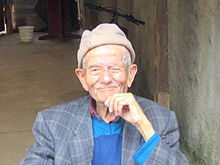**Definitions and Perspectives on Old Age:**
– Retirement age varies across countries (around 65 in Western nations).
– UN defines old age as 60+, while in Sub-Saharan Africa, it starts at 50.
– Different sub-groupings exist (young-old, middle-old, oldest-old).
– Dimensions of old age include chronological, biological, psychological, social, and developmental aspects.
– Common perceptions on old age from middle-aged authors and challenges faced in old age.
– Historical views on old age as a time of decline and societal preferences for youth.
**Senior Citizen and Signs of Aging:**
– “Senior citizen” is a common euphemism for old age.
– Eligibility for social programs often starts around age 65.
– Signs of aging include bone and joint problems, chronic diseases, dental issues, and digestive system problems.
– Mental aspects like agreeability, caution, depressed mood, fear of crime, and reduced cognitive abilities.
– Perspectives on old age from early pleasant stages to later health declines and increased dependency.
**Frailty and Geriatric Research:**
– Frailty becomes common after age 80, with varying prevalence rates.
– Lack of research and difficulty in defining frailty noted by gerontologists.
– Global patterns show higher frailty rates with age, more common in women and wealthier nations.
– Geriatric research emphasizes the need for more studies on frailty and its recognition by physicians.
– Longitudinal studies highlight the prevalence of frailty in older age groups and the challenges it poses in healthcare.
**Societal and Historical Views on Old Age:**
– Old age has been viewed negatively throughout history, with varying levels of respect or disdain.
– Modern perspectives show a decline in the cultural status of old people.
– Attitudes toward old age well-being vary between cultures, with negative attitudes often prevailing.
– Research indicates resentment and disdain toward older people in American society.
– Simulations of old age aim to help younger individuals understand the aging process.
**Global Patterns and Healthcare Challenges in Old Age:**
– Frailty prevalence rates vary globally, increasing with age and more common in women and wealthier nations.
– Longitudinal studies reveal the prevalence of frailty in older age groups.
– Healthcare challenges include injury as a common reason for hospitalization in the elderly.
– Frailty is recognized based on observation and defined as increased vulnerability to stressors.
– Prevalence of frailty varies by definition, highlighting the need for more research and support in medical care.
Old age is the range of ages for persons nearing and surpassing life expectancy. People of old age are also referred to as: old people, elderly, elders, seniors, senior citizens, or older adults. Old age is not a definite biological stage: the chronological age denoted as "old age" varies culturally and historically. Some disciplines and domains focus on the aging and the aged, such as the organic processes of aging (senescence), medical studies of the aging process (gerontology), diseases that afflict older adults (geriatrics), technology to support the aging society (gerontechnology), and leisure and sport activities adapted to older people (such as senior sport).

Old people often have limited regenerative abilities and are more susceptible to illness and injury than younger adults. They face social problems related to retirement, loneliness, and ageism.
In 2011, the United Nations proposed a human-rights convention to protect old people.
